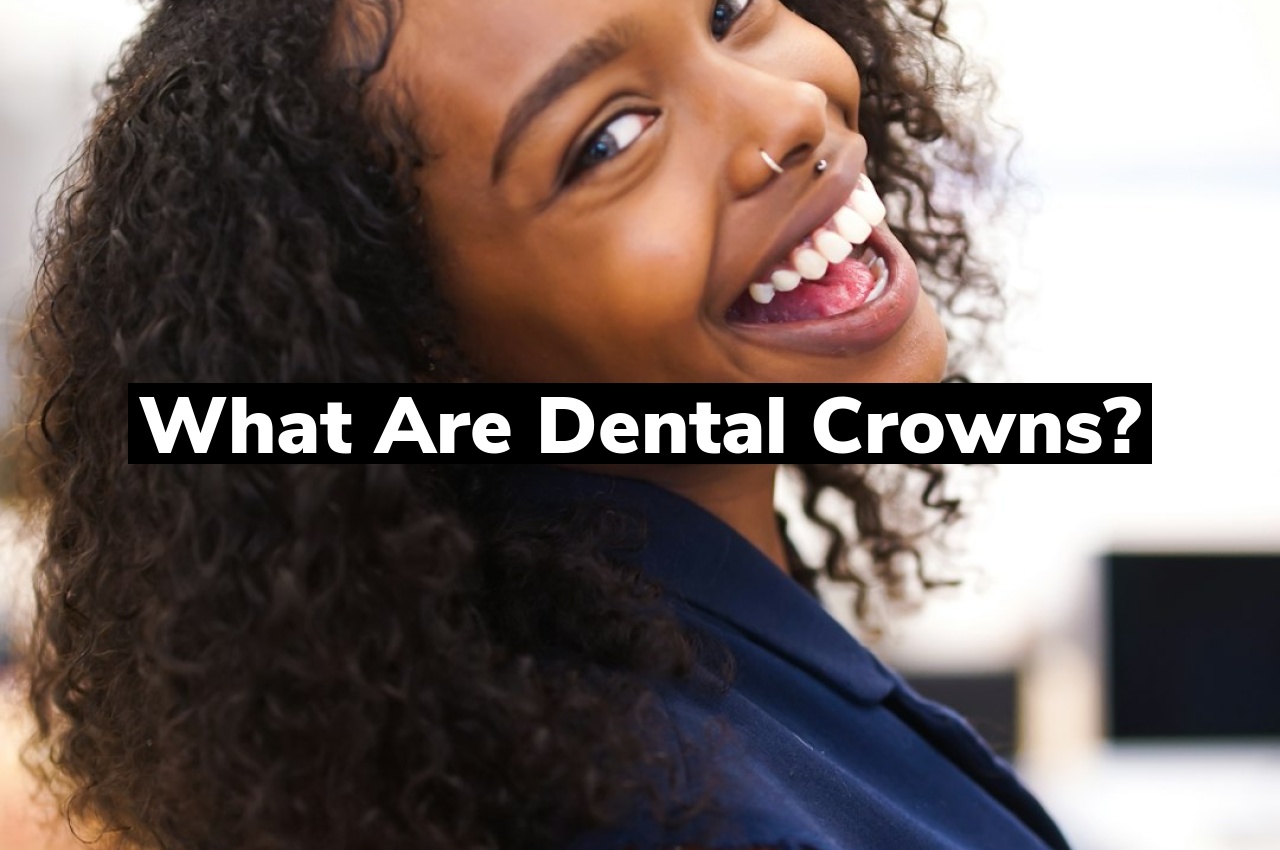The Importance of Dental Crowns in Modern Dentistry
Maintaining optimal oral hygiene is pivotal in preventing tooth decay, one of the most common oral health issues. When a tooth suffers damage, whether from decay or injury, a dental crown often becomes essential in restoring its function and appearance. This form of dental restoration acts as a protective cap, reinstating strength, and can enhance the aesthetic appeal of a smile. For those eager to understand the full scope of benefits and considerations associated with this dental procedure, I provide insights and comprehensive details. Keep reading to learn about the different types of dental crowns and the vital role they play in contemporary dentistry.
Overview
Understanding the role of dental crowns within the field of modern dentistry is essential for optimal oral health management. A dental crown, often simply referred to as ‘the crown,’ is a custom-fitted restoration that encases a tooth, providing structural integrity and protection following procedures like a root canal. As I delve into orthodontics and broader oral care, I regularly encounter patients uncertain about when exactly a dental crown becomes necessary. Key moments include when a tooth is weakened, severely damaged, or aesthetically compromised. Ensuring that the crown is a suitable solution requires careful consideration of dental health as well as practical aspects, such as insurance coverage, which often influences the course of treatment. From this vantage point, my focus on crowns intersects with the broader pursuit of sustaining health and preventing future complications.
What Is a Dental Crown?
At its core, a dental crown is a kind of dental restoration meticulously designed in a laboratory setting, typically from durable materials like dental porcelain or ceramic. These materials are preferred not just for their sturdiness and ability to withstand the heat and pressure of daily tooth function, but also for their aesthetic qualities that resemble natural teeth.
The process of crafting and fitting a crown demands precision, as it must conform immaculately to the affected tooth and integrate seamlessly with the surrounding gums. Our collaboration with skilled technicians in a dental laboratory ensures each crown is uniquely tailored to the individual’s mouth, promoting both oral health and a harmonious smile.
When Would You Need a Dental Crown?
Enlightening patients about the need for crowns for teeth forms a significant part of my practice, guided by guidelines from authoritative bodies such as the American Dental Association. A crown may be recommended when a large cavity threatens the ongoing health of a tooth or when significant structural support is required following restorative treatments, ensuring the patient can enjoy a resilient smile for years to come.
Innovations in dental materials, including the use of zirconium dioxide, have expanded the possibilities for crowns that match the natural luminosity and strength of enamel. My professional satisfaction amplifies when fitting these state-of-the-art crowns, as they not only safeguard a patient’s oral health but also enhance the aesthetic appeal of their smile, sometimes transforming it entirely.
Types of Dental Crowns
Dental crowns emerge as vital players in the arena of cosmetic dentistry, not only restoring function but also enhancing the esthetic appeal of smiles. Achieving this involves a selection from varied types of crowns, each with its unique characteristics and materials, ranging from the quick-fix temporary crown to the durable one-day crown fabricated with cutting-edge technology. While some crowns encase the entire tooth, onlays or 3/4 crowns cover only the affected area, preserving as much of the natural tooth structure as possible. Incorporating materials such as gold for their durability or porcelain for a more tooth-like appearance, these crowns are securely anchored with dental cement, ensuring they remain affixed within the complex environment of the mouth. The choice among these options is carefully weighed against factors like the condition requiring the crown, aesthetic desires, material properties, and of course, the need for temporary versus long-term solutions like dentures.
Temporary Crown
In my clinical experience, temporary crowns serve as an interim solution while the final, permanent crown is being fabricated. Crafted commonly from stainless steel or acrylic-based materials, they offer immediate protection to prepared teeth, safeguarding them against further damage and maintaining dental hygiene during the brief transitional period.
Patient comfort is paramount, and therefore, ensuring easy accessibility for dental floss under the margins of these temporaries eliminates potential hygiene concerns. Although less durable than permanent crowns, temporary crowns are essential for preserving tooth structure and space for the final restoration, which may include intricate inlays and onlays.
One-Day Crown
One-Day Crowns represent a swift advancement in restoring the strength and appearance of tooth enamel with minimal disruption to patients’ lives. These crowns, often composed of ceramic or resin, can be matched to the natural color of teeth, providing a functional and aesthetic repair in a single appointment.
By circumventing the need for temporary solutions, One-Day Crowns facilitate a return to normal activities like chewing without the worry of tooth loss or the inconvenience of multiple dental visits. This efficiency hinges on the use of precise digital technology to fabricate a crown that fits seamlessly with a patient’s natural tooth structure and bite.
Onlay or 3/4 Crown
In the specialized sphere of prosthodontics where I routinely refine my craft, the onlay, or 3/4 crown, stands out as a conservative and risk-averse treatment option that I frequently recommend. Unlike full crowns, these restorations preserve a sizeable amount of the natural tooth structure, providing a robust solution without the need for extensive enamel removal.
When discussing the restoration with my patients, I find that the potential reduction in cost compared to full crowns, coupled with the possibility of health insurance contributions, often makes onlays an attractive proposition. By utilizing durable materials, similar to those in full crowns, like porcelain reinforced with steel substructures, onlays sustain the tooth’s functionality and patient’s oral health economically and effectively.
Dental Crown Procedure
The procedure to fit a dental crown is a sophisticated blend of art and science, tailored specifically to restore the shape and function of a compromised tooth. As a practicing dentist, my role is to ensure the integrity of the procedure whether it calls for a multi-day approach, complete with a temporary crown, or the expediency of a same-day procedure. Both methods begin with removing decay and shaping the tooth, which might have been weakened by a fracture or previous fillings. The choice between amalgam or a more aesthetic material often comes into play, depending on the tooth’s visibility and the patient’s preferences. Following the shaping, a precise dental impression captures the intricacies of the bite and tooth alignment, setting the stage for a crowning achievement in dental restoration.
Multi-Day Procedure With a Temporary Crown
During my routine procedures, the multi-day dental crown process frequently includes the placement of a temporary cap, serving to shield the tooth from bacteria and dental plaque in between appointments. Maintaining diligent communication, I provide patients with comprehensive information to care for their temporary crowns, stressing the avoidance of sticky or hard foods that could dislodge the cap.
My practice within pediatric dentistry has highlighted the importance of a patient-centered approach when dealing with temporary crowns, especially for younger individuals. With a special focus on minimizing discomfort, I ensure that the temporary cap not only fits comfortably but also effectively prevents the ingress of bacteria until the permanent crown is securely in place.
Same-Day Procedure
As I guide patients through the possibility of a same-day dental crown procedure, the conversation invariably touches on the aspect of dental insurance and its coverage for this type of expedited care. It’s a gratifying moment when I inform them that, in many cases, dental insurance will contribute to their procedure, making the advanced care more accessible.
The precision of the same-day procedure is remarkable, as it negates the need for a post and core surgery that is common with traditional crowns. After meticulously shaping the tooth, I apply a high-quality dental cement that secures the crown in place, allowing patients to leave my office with a fully restored smile, ready to maintain it with nothing more than their regular toothbrush and good oral hygiene habits.
Advantages of Dental Crowns
In my day-to-day practice, the well-being of a patient’s smile hinges greatly on the successful integration of dental crowns. The forefront of dental restoration technology merges with meticulous craftsmanship to provide resilient barriers against the typical wear and tear our teeth experience. Notably, a properly placed crown effectively shields against potential injury and decay, a primary goal in maintaining oral health.
When discussing oral hygiene with patients, I emphasize the role of dental crowns in conjunction with routine care such as using mouthwash. Crowns support the underlying tooth structure and help seal out the type of bacteria that mouthwash aims to eliminate, making an invaluable contribution to the full spectrum of oral hygiene practices.
The advancement of dental materials and technology resonates through the precise design of dental crowns. Crown longevity has improved, allowing them to withstand significant forces over time. This resilience makes crowns a reliable solution for teeth that have weakened due to injury or extensive restorative procedures.
My commitment to patient comfort during dental procedures often involves the judicious use of sedation techniques, which pave the way for a tranquil experience. Patients rest easy knowing that their dental crowns can be placed efficiently and painlessly, thanks to modern sedation practices, ensuring their visit to the dental chair is as stress-free as possible.
Disadvantages of Dental Crowns
Despite their indispensable role in dental restoration, crowns can occasionally lead to complications such as toothache. This discomfort sometimes emerges if a crowned tooth still contains a nerve, and it may be exacerbated by the pressure from the crown itself or from an improper fit. When patients report these symptoms, I immediately assess the situation to provide relief and adjust the crown if necessary.
Another issue can arise with the surrounding gum tissue, which may become inflamed or infected in reaction to a crown. My responsibility includes informing patients about proper gum care and monitoring the health of the tissue around the crown placement, ensuring that the crown maintains its purpose as a protective and restorative device.
When working with laboratory-fabricated crowisons, challenges may surface with crowns crafted from certain types of base metal alloys which may not be as biocompatible or aesthetically pleasing as other materials. I always present my recommendations to patients, emphasizing the advantages of high-quality materials that blend seamlessly with natural teeth and minimize the risk of allergic reactions or aesthetic discordance.
While crowns are a significant option for tooth restoration, the emergence of dental implants presents an alternative route for certain patients. In my practice, my goal is to guide each patient to the best solution, which may involve comparing the benefits of crowns against those offered by dental implants, ensuring the chosen method aligns with their specific oral health needs and personal preferences.
Recovery and Side Effects of Getting a Crown
After meticulously attending to the detailed work of dental crown placement in my office, patients often inquire about their recovery timeline and the longevity of their new restoration. The transition back to routine after receiving a crown is an area where clear guidance is paramount; thus, when individuals request an appointment, careful attention is given to explaining the forthcoming procedure’s impact on their daily activities. Whether the goal is to restore dental implants or repair damaged teeth, understanding the permanence and healing process associated with crowns is an essential component of patient care and an integral part of the service provided within my practice.
How Long Does It Take to Feel Better After a Dental Crown Procedure?
Recovery from a dental crown procedure varies among individuals, but typically, any soreness or sensitivity dissipates within a few days. As a dentist, I reassure my patients that, especially when the crown is employed to protect a site prepped for dental implants, the discomfort is temporary and serves as a stepping stone to a fully restored and functional dentition.
It’s rare, but some individuals experience reactions to materials in dental crowns—such as nickel or lithium—resulting in additional discomfort that may prolong recovery. In my practice, I emphasize the importance of using high-quality materials that minimize wear and promote swift healing, ensuring my patients can quickly return to their daily routines with the confidence that comes from a restored smile.
Are Dental Crowns Permanent?
In general, dental crowns offer a long-term solution for a damaged tooth, but they are not permanent in the same way as natural tooth enamel. Over time, a crown’s bond to the underlying bone structure may weaken, and wear can accumulate, requiring reassessment by a dental professional and potentially a replacement as advised by the insurance company.
Although robust and designed to integrate seamlessly with a tooth’s existing structure, including the bone and nerve, the lifespan of a dental crown can be affected by oral hygiene practices and the stresses placed upon it over time. Regular check-ins with my practice can ensure that the insurance company’s investment in the dental health of its clients is well managed and that crowns fulfill their protective role for as long as possible.
Possible Complications of Having a Crown
In my years of clinical experience, I have learned that while dental crowns play an essential role in dental restoration, they are not without their potential complications. For instance, following a crown placement procedure, some patients report heightened teeth sensitivity, a rather common occurrence that can arise from the procedure itself or from the thermal conductivity of the crown materials. During routine teeth cleaning sessions at the clinic, I also observe issues such as chipped crowns, which could compromise the protection that the restoration offers. More severe scenarios I’ve encountered include a crown becoming knocked out or loose, an alarming situation that demands immediate attention. In our clinic’s experiments with different dental materials, we’ve come across instances of tooth discoloration and allergic reactions in a minute fraction of cases. And lastly, gingivitis, an inflammation of the gums, may also develop around a crown if proper dental hygiene is not maintained. As a dental professional, addressing these potential challenges is part and parcel of ensuring each patient’s journey toward optimal oral health is as smooth as possible.
Teeth Sensitivity
In my commitment to restorative dentistry, I am acutely aware that a new prosthesis, such as a dental crown, can sometimes result in teeth sensitivity. This is particularly true if the pulp within the tooth becomes irritated during the procedure, a reality which may affect the immediate comfort of my patients.
The craftsmanship of a dental technician plays a pivotal role in ensuring the longevity of a crown, yet despite their expertise, sensitivity can still occur. It’s a vital aspect of my practice to mitigate this by selecting appropriate materials and employing techniques designed to minimize any post-procedural sensitivity for my patients.
Chipped Crown
Encountering a chipped crown can be unsettling, particularly as it may affect the crown’s color match to native teeth, disrupting the overall aesthetics of a patient’s smile. In my practice, I often use occlusion as a diagnostic tool to discern the underlying causes of a chip, whether it results from an imperfect bite or an accident, to prevent recurrence.
Addressing a chipped crown swiftly is not only about restoring a smile but also about preserving the integrity of the dental medicine used to protect the tooth. I aim to answer any faq my patients have regarding the durability and care of their crowns, providing peace of mind and ensuring their return to optimal oral health.
Crown Knocked Out or Loose
In my practice, I have seen instances where even a well-placed temporary crown can become loose, particularly if there’s undue stress to the jaw, like during the extraction of a wisdom tooth. It’s imperative to reconnect these crowns swiftly, as they serve to protect the exposed dentin from further damage.
At times, a crown might be knocked out for reasons beyond a patient’s control, which can be as unexpected as a reaction to the metal beneath the crown, like copper. When this occurs, I recommend patients keep the crown safe and schedule an appointment promptly to avoid damage to the vulnerable tooth structure.
Allergic Reaction
In my tenure as a dentist, I have witnessed rare instances where patients experience allergic reactions to the materials used in the manufacturing of dental crowns. Such reactions can manifest as an adverse response in the soft tissues of the mouth, for example, an inflamed lip after chewing gum, which may be traced back to sensitivity to certain acids used in the dental crown process.
I am acutely conscious of the complications that can result from manufacturing defects, such as corrosion in metal crowns, leading to allergies in sensitive patients. It’s my duty to ensure that every crown is fabricated to the highest standards, meticulously checking for any imperfections that could affect a patient’s oral health or lead to discomfort while performing everyday activities like chewing gum.
Gum Disease
As I address the comprehensive needs of my patients, I remain vigilant for indications of gum disease, particularly around sites with dental crowns. If left unchecked, a crown that doesn’t conform perfectly to the unique contours of a patient’s dental anatomy can create spaces where bacteria can flourish, leading to gingivitis or periodontitis. Patients express relief when they learn about our dental discount plan, which helps to mitigate the cost, or fee, associated with the vigilant maintenance necessary to prevent such diseases.
In my conversations with patients, I stress the importance of being cognizant of how lifestyle habits, such as the frequent consumption of sugary drinks, can accelerate the onset of gum disease, especially near crown margins. They appreciate my advice on simple changes, like using straws to minimize contact with the teeth when they drink or opting for a toothbrush with soft plastic bristles designed to be gentle on the gums, as actionable steps to support their oral health.
How Long Do Dental Crowns Last?
In my dialogues with patients, the longevity of dental crowns frequently surfaces as a topic of curiosity, especially during their dental hygienist visits. I assure them that with proper maintenance, such as routine cleaning and fluoride treatments, a well-crafted crown can last between 5 to 15 years, or even longer. This depends greatly on the patient’s oral hygiene and the crown’s exposure to the inevitable wear and tear associated with permanent teeth.
While sharing my insights about dental materials, I highlight that crowns containing palladium or other precious metals are exceptionally durable. They often outlast those made from less sturdy materials, underscoring the importance of considering a crown’s composition. These metal variants contribute to the long-term resilience of the repairs we make to permanent teeth, giving my patients confidence in the stability of their dental work.
Nevertheless, even with robust materials like precious metal alloys, a crown’s lifespan is not infinite. Regular evaluations by a dental hygienist, along with an affirmative commitment to consistent and thorough dental care, are critical. Employing fluoride mouth rinses and other preventive measures will bolster the strength and longevity of their crowns and overall oral health.
The phrase ‘permanent teeth’ carries the implication of not just longevity but enduring health and functionality. It’s my duty as a dentist to underscore the role of crowns in preserving the integrity of every patient’s smile. In choosing the right material for their crowns, whether precious metal or otherwise, my aim is to provide them with a solution that stands the test of time.
Alternative to Dental Crown
In my years of dental practice, I have navigated various pathways of health care, discovering that while dental crowns are an excellent solution for many, they’re not the only option. Patients who have qualifying medicare plans often inquire about alternatives, seeking treatments that are covered and align with their specific dental needs.
Dental implants are one viable alternative to crowns, offering the distinct advantage of replacing an entire tooth from root to crown with a durable screw that anchors directly into the jawbone. This choice becomes particularly relevant during a dental emergency involving a tooth that cannot be saved with a crown.
Another alternative to crowns might involve the use of dental bonding, especially in cases where the damage to a tooth’s surface is minor. With this technique, a resin material is applied and shaped to look like natural enamel, delivering a less invasive and often quicker solution without involving the tongue or surrounding tissues excessively.
Lastly, in certain situations, choosing a porcelain veneer can address cosmetic concerns effectively, offering a less extensive procedure than placing a full crown. The veneer, a thin shell of porcelain, adheres to the front of the tooth, transforming its appearance while the tongue relishes the familiar feeling of a virtually unchanged tooth structure.
Frequently Asked Questions
What functions do dental crowns serve in dentistry?
Dental crowns restore functionality to damaged teeth and enhance their appearance. They act as protective caps, shielding the underlying tooth from further decay or damage.
How many types of dental crowns are available?
Dentists offer various types of dental crowns, each designed to restore damaged teeth effectively. Among these options are:
- Porcelain-fused-to-metal
- All-ceramic or all-porcelain
- Gold alloys
- Base metal alloys
The choice depends largely on the specific needs of the patient, location of the tooth, and aesthetic considerations.
What does the procedure for getting a dental crown entail?
Getting a dental crown typically involves two visits to the dentist: the first for examining and preparing the tooth and the second to place the permanent crown. Your dentist will reshape the tooth, take impressions, provide a temporary crown, and then install the custom-made crown at the follow-up appointment.
What are the primary advantages of choosing dental crowns?
Dental crowns provide a robust safeguard for damaged teeth, simultaneously restoring function and enhancing aesthetic appearance. They also offer a lasting solution with the potential to enhance overall oral health by supporting weakened structures and preventing further decay or damage.
Are there alternatives to getting a dental crown?
Absolutely, several other options exist if a dental crown isn’t right for you, such as inlays, onlays, or dental veneers. Each of these alternatives serves to restore the tooth’s structure and appearance, providing a different range of coverage, durability, and aesthetic results.
Conclusion
Dental crowns are pivotal in restoring and safeguarding teeth that have been compromised by damage or decay, fusing art with dental science to maintain oral health. They offer not only a shield against injuries and bacteria but also improve a patient’s smile aesthetically. Despite their benefits, crowns require careful selection to minimize potential complications such as sensitivity or gum disease. Overall, crowns stand as essential elements in modern dentistry, providing durable solutions and enhancing the longevity of our natural teeth.
Looking for a new crown to replace a damaged or chipped tooth contact or visit our office today!







